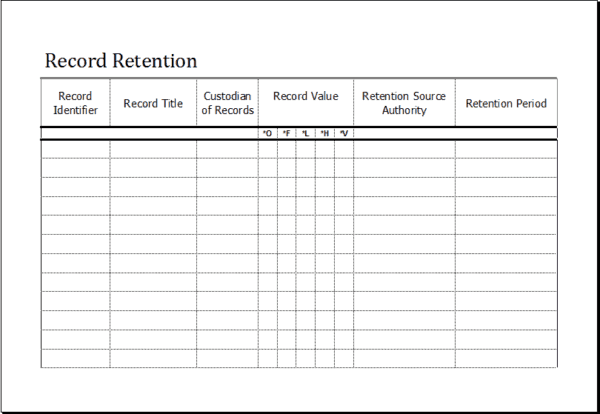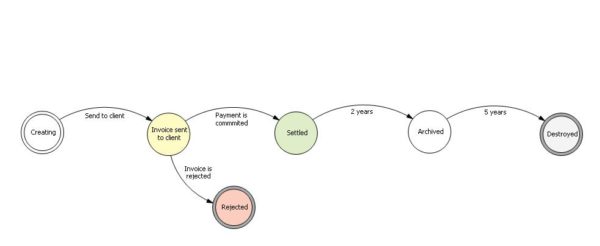
What is a Record Keeping Policy?
A record keeping policy is a set of rules to control document and information lifecycle in an organization, from the moment it is created or received, until it is stored for historical reference or destroyed.

The business activity generates different documents in the day to day: invoices, contracts, minutes, etc. These are created, used and then stored or destroyed, but how long should we keep each type of document? The theory advises to separate the documents in the management, central and historical archives, according to their category and the need that exists to conserve them.
Record keeping policy and GDPR
In light of the fact that GDPR is now very much around the corner we turn our attention to data retention or record keeping or book keeping however you may call it in your organisation. It is a vital part of the GDPR’s new process where you should only keep an individuals personal data for as “long as necessary”.
Now most data when it is finished being used for the purpose it was originally intended for should now be removed to protect that individuals rights. There is however some exceptions to this rule and they are largely ruled by law. The law of each country will differ and will vary on what type of data is being held and the purpose it is for.
Here is where a record keeping policy is vital for any business to understand and coordinate the difference of the importance between data, the legislation it fits into and when that data should be removed.
This part of the process may take the longest to start with but once set up it can save time, money and protect your business in line with any current legislation.
The standard: International Standard for Archival Description
Record keeping is not just a GDPR thing. There are several international standards for this concept. Probably the most important of them is ISAD (G) (International Standard for Archival Description), a standard to register archival documents produced by corporations, persons and families.
ISAD (G) defines a list of elements and rules for the description, management and record keeping of archives.
To start with you need to work through several steps:
1. Set up a Document Classification Chart
This will aid in uniquely categorising each documents type. When you are done, it should include every document type in the organization (you may add a “Miscelaneous” type).
2. Create a Document Valuation Table
Then the importance of the activity these document types take part in an organisation must be assessed though a Document Valuation Table.
Other important info that the Document Valuation Table must store is a risk analysis for each document type that clarifies how “dangerous” would be for both: the company and the former data holder, losing control of a document of that type thorugh unauthorized disclosure, accidental lost or others.
Main goal for the Document Valuation Table is making employees and business crew fully aware of the pourpose, importance and potential risk of managing every document type.
3. Create a Document Retention Table
Finally define the conservation times of every document both electronic and physical and what happens at the end of its life cycle in a Document retention Table (destruction, archive location changing, scanning, etc.).

The Document Retention Tables are an archival tool defined by the ISAD-G standard used to control the life cycle of documents in an organization.
Setting up a Record Keeping Policy with Software
Most organizations use ECM Software or Document Management tools to effectively implement their record keeping policy.
Basically, implementing a Record Keeping Policy consists in defining a workflow for each document type in an organization, and include the archive or record destruction in that workflow.
With this kind of tools, you configure each document category so that, once the document is old enough, the system either warns the user (if document is paper based), automatically proceed to document destruction (if document is just digital) or both.

In the following posts we will create a sample video tutorial showing how to manage a recordkeeping policy using Docuo ECM Software. Stay tuned.!
See you in the cloud!

